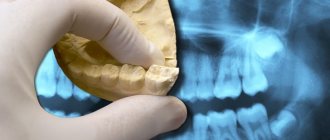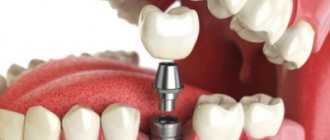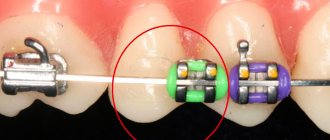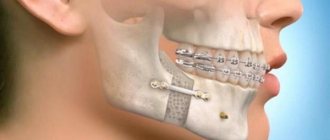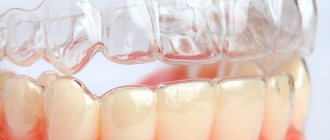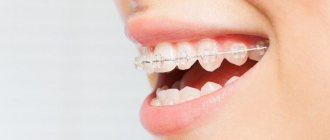Everything you would like to know about correcting your bite and straightening your teeth with braces.
Let's be honest: in modern realities, a beautiful smile is the norm, and it is necessary to get rid of dental imperfections. But, having set such a goal, it is desirable to have reliable information about existing methods and upcoming tests. We tried to collect in one article all the most important things about braces in order to save you from having to look for answers on your own on the Internet, where the truth is mixed with myths and advertising fluff.
Important! In the article, prices are indicated for St. Petersburg and the Leningrad region.
How are braces different from aligners?
This question worries many: is it possible to pay more, but get by wearing transparent removable aligners? The truth is that nice aligners can only cope with minor problems (for example, with one tooth that has grown incorrectly), but only fixed structures - those same “ugly braces” - can create an orthodontic load to shift the dentition.
As for cap-aligners, to achieve the effect, it is recommended to wear them at least 22 hours a day, removing them only during meals. As practice shows, a person often violates such rules by being distracted, forgetting, or simply allowing himself some indulgence. Strictly speaking, aligners are not intended to correct bites, and if they are positioned as such on the clinic’s website, it is better to turn to other specialists.
And the financial point: you will have to pay not more for the aligners, but much more, because during the treatment period they need to be changed at least 15 times (and sometimes much more), so the average minimum cost of correction with the help of aligners should be considered an amount of about 250- 300 thousand rubles.
Pros and cons of orthodontic structures
Let's look at the positive and negative qualities of the two methods of bite correction.
Pros and cons of permanent devices
They have their pros and cons as any method of bite correction.
Braces for children have the following advantages:
- provide rapid correction of anomalies due to continuous, powerful impact;
- corrects complex, congenital defects;
- wide range of application by age;
- easy adaptation;
- do not provoke problems with diction;
- quick repair possible;
- the ability to move dental units in the desired direction.
These devices not only have advantages, they also have disadvantages.
These include:
- low aesthetics of metal devices;
- difficulties in caring for them;
- high price.
Despite the inconvenience of correction systems and other disadvantages, it is widely used among adolescents.
Installing and wearing braces: does it hurt?
When installing braces, the vast majority of patients do not experience any noticeable pain, but discomfort certainly appears, and you will have to get used to the braces - for some faster, for others longer, on average - 1-2 days. The exception is, perhaps, people with a very low pain threshold or with increased impressionability - it is from them that the myths about the pain of installing and wearing braces come.
In fact, sometimes there is irritation of the mucous membranes of the lips and cheeks. To solve this problem, a special wax is used, which the doctor will definitely suggest after installation.
What types of dental braces are there?
By design, braces are divided into:
- Classic ligature metal dental braces, characterized by durability, biocompatibility and an affordable price for most.
- Self-ligating braces. This is a separate group of NON-LIGATION braces, distinguished by their design and faster treatment effect. They come in metal and ceramic.
Based on the material from which the bracket is made, there are:
- Stainless steel metal braces and titanium braces. Hypoallergenic nickel-free titanium braces - for patients with a suspected allergy to nickel, which is part of stainless steel.
- Aesthetic sapphire and ceramic braces systems for children who are particularly demanding of aesthetics are distinguished by their invisibility and higher cost of braces.
Based on the location of the bracket on the tooth, there are:
- Vestibular braces are attached to the front surface of the teeth.
- Lingual braces are invisible braces placed on the lingual and palatal surfaces of the teeth. These braces are very popular among those who do not want to advertise their treatment (actors, fashion models, announcers). Lingual braces are rarely placed in children, because... they significantly complicate individual oral hygiene and require longer adaptation. These are the most expensive and difficult braces to wear.
I’ll take off my braces, a couple of years will pass, and my teeth will return to their place... is this true?
But this is true - but from the practice of past years! Now, after removing braces, the dentition is secured using a special non-removable retainer apparatus; previously this was not always done - hence the accumulated complaints. Today, orthodontists are required to install such a device.
A retainer is a thin wire that is installed on the inside of the front teeth and prevents them from moving apart. And this is for the rest of your life, but you shouldn’t worry: the delay is imperceptible, those around you don’t see it, and if it breaks, it’s easy to fix—just don’t delay your visit to the doctor.
Another problem is more pressing: sometimes, after straightening the dentition, previously hidden aesthetic defects (for example, different lengths of teeth) become noticeable. In this case, you will really have to resort to restoration or buy expensive veneers.
Important! The orthodontist must notice such defects and warn the patient before starting treatment.
Early treatment: orthodontic plates and trainers.
- Plates for straightening teeth are familiar to most people for a simple reason: they have been actively used for many decades. They have many types and design options. The most classic ones are plates with screws, which are used to stimulate the growth of the upper (and sometimes lower) jaw. In addition, the plates can be equipped with additional elements: arcs, pushers, and so on. Their goal is to correct the position of individual teeth, but, unfortunately, the accuracy of work comparable to the work of braces is almost impossible to achieve with their help. Therefore, often, plates cannot be the only treatment. The plates should be worn around the clock, removing them only during hygiene to remove food debris.
A plate with a screw for the lower jaw.
- Elastic positioners : trainers, LM-activators, Myobrace and other functional devices are designed to activate jaw growth and eliminate bad habits. In addition, some types of trainers, for example, the Myobrace brand, have cells for teeth (helps teeth erupt correctly, in case of not very pronounced anomalies). Since elastopositioners are double-jawed devices, they cannot be worn around the clock. The wearing scheme is as follows: mandatory evening wear for 2-3 hours (for example, while watching cartoons, etc.) + mandatory night wear.
LM activator
- The functional group includes the Frenkl apparatus and its modification: the Persin apparatus. Perhaps one of the most famous “name” devices. There are 3 main types to correct different anomalies. The principle of operation is similar to elastopositioners: changing muscle balance and stimulating the growth of the upper or lower jaw. The wearing pattern is similar and the effectiveness is comparable to trainers. The difference is that the Frenkl apparatus and its modifications are made of hard plastic and are much less comfortable to wear. In addition, it requires a high level of skill from the technician and physician to properly manufacture and fit it in the oral cavity. Today, elastopositioners are preferable to use precisely for these reasons.
Frenkl's apparatus.
- Double-jaw devices to activate the growth and advancement of the lower jaw. This group includes a twin-block and a Twicare device. Used for distal occlusion (Class 2 according to Angle). They can be used in adults: in this case, the lower jaw does not grow, but only moves to a more anterior position. But in some cases, this is what is needed, since the posterior position of the lower jaw is a fairly common phenomenon.
Twin block device diagram.
- Device for rapid palatal expansion . It has many names: expander, Derichsweiler apparatus and others. There are many modifications, but the essence and active part (screw) is the same. Used to correct narrowing of the upper jaw. It is a non-removable device. Can also be used in adults, but only in combination with surgical support. It has a screw similar to the screw of conventional plates for expanding the upper jaw, only more powerful, as well as a more durable design. The screw is tightened much more often, and accordingly, expansion occurs quickly (due to the divergence of the median palatal suture) - in children it is quite mobile, and in adults it is mobilized surgically. Often, to reduce the lateral inclination of teeth, support is used on microimplants installed in the palate. There are many opinions at what age the use of a palatal expander is justified: most orthodontists believe that the optimal age is 13-14 years, but sometimes the device is placed on six-year-old children based on milk teeth and good results are achieved.
Derichsweiler apparatus
- There are a great variety of different nominal devices, differing in both design and principle of operation. Many of them have long been outdated, many are quite functional, but have more convenient/effective/easy-to-use analogues, some are still relevant today. The main thing is that your orthodontist clearly understands why he is prescribing this or that device.
Quadhelix is a device for expanding the palate.
Do braces damage enamel and lead to caries?
No, the tight fit of the braces completely eliminates the penetration of food debris and microbes into the tooth; Dental enamel glue used in practice is harmless, moreover, it contains the useful element fluorine. The brace-lock even protects the tooth in a certain way.
But improper care of braces is really fraught with trouble: oral hygiene after installation of an orthopedic structure requires more attention and responsibility due to the increased accumulation of plaque. And where there is plaque, there is caries!
Is it necessary to use additional products to clean braces?
On forums (and sometimes in the recommendations of “experts”!) there are numerous additional products that supposedly make oral hygiene easier in the presence of braces (rinses, ultrasonic brushes, etc.)
In fact, with a responsible approach, it is quite possible to get by with three basic tools (toothbrush, dental floss, brush). In this case, you should not rely on someone else’s opinion. The quality of care will be assessed by a doctor who conducts regular examinations, and he will also recommend additional remedies, if necessary.
When is the best time to get braces for your child?
Should my child get braces? And if so, when is the best time? These questions concern many parents. And this is understandable: if you see an incorrect bite, a noticeable flaw in the appearance of your son or daughter, and you know exactly how to correct it, then you want to do it as soon as possible. But, unfortunately, you will have to wait until your offspring enters adolescence. Before this time, it is not at all useful to install braces. However, this does not mean that you need to wait idly - special orthodontic devices for children also exist
Children 12 years old and even 14 years old are not fitted with braces. And this is not a whim of capricious orthodontists, but a fact supported by important medical evidence.
To install braces, a number of conditions must be met
- Tooth roots are formed. There is no point in putting braces on baby teeth. If the roots have not yet formed, and an additional load is placed on the teeth (and a serious one - after all, braces must move them to another place), then the process of root formation may stop. Or they may even begin to dissolve, which can lead to tooth loss. Therefore, before installing a brace system, it is imperative to do an X-ray examination of the jaws - it will show at what stage of development the roots of the teeth are.
- The second molars (i.e., the last teeth in the jaw) have erupted. Sometimes these molars, which are the last to grow in childhood - at the age of 12-13 - do not have enough space in the jaw. Then they cut crookedly and to the side. If in this case braces are already installed, then all treatment may be nullified. A recurrence of malocclusion is possible, requiring completely different orthodontic treatment.
- The intraoral and perioral muscles are developed correctly and harmoniously. Muscle imbalance is a very common phenomenon in children: it can be caused by constant breathing through the mouth rather than the nose (for example, due to frequent colds), long-term addiction to the pacifier, improper breastfeeding, etc. It is impossible to install braces if the tongue rests on the dentition, the teeth do not meet each other, or the upper jaw is underdeveloped. First you need to solve this problem with the help of other orthodontic appliances.
- The enamel of the teeth is strengthened and formed. Otherwise, braces can unwittingly cause the development of caries and destruction of tooth enamel.
There are other reasons why you should not install braces in childhood. For example, the lack of hygienic skills necessary to clean them, as well as a conscious approach to wearing complex orthodontic apparatus.
On the question of materials
As for the materials from which braces are made for children - that is, for teenagers 12-14 years old - there are no special features: they have access to everything that is available to adults. If a child understands well the need for treatment and is motivated to wear a brace system, wants and knows how to care for it independently, then you can opt for plastic or ceramic braces. They look more aesthetically pleasing, but are also relatively fragile and require more careful care. Sapphire braces, considered the most beautiful, are usually not given to children, but only because of their rather high cost.
"Fun" classic
If your son or daughter simply obeys your decision and dreams of quickly removing the orthodontic system, without treating it particularly carefully, then it is better to choose classic metal braces. They “work” faster and are more economical. It’s also easier to care for, although not by much: any brace system requires careful oral hygiene.
The issue of attractive appearance of metal braces can be solved with the help of colored ligatures and elastics (special rubber bands), which can enliven any orthodontic “landscape”.
Expert opinion
All this does not mean that responsible parents, having seen a malocclusion in their child, should simply wait patiently for the right age. It is worth bringing your child to the orthodontist when his first permanent teeth erupt - early diagnosis will help identify emerging problems and quickly find ways to solve them. Removable trainers (mouthguards that are worn only at night) and plastic plates can help. In many cases, they are quite effective, and even if the problem is not completely solved, wearing them will prepare your child for installation of braces in the future. Moreover, prepare at all levels - both physiological (eliminate muscle dysfunction, ensure proper development of the jaw, etc.) and psychological. The experience of wearing orthodontic appliances and the positive results obtained will make it easier to get used to braces and help you understand their importance and necessity.
Is there a need to give up your usual food?
As a rule, when installing a brace system, the doctor will actually announce “forbidden” foods, and this list looks quite depressing (cookies, chips, seeds/nuts, crackers, chewing gum, pizza, chocolate bars, etc. - everything that can stick to the structure , creating conditions for the proliferation of microbes, or damaging it). But in this case, the doctor’s recommendations should be approached in a differentiated manner: there is a clear reinsurance here, the only thing that is actually required from the patient is caution.
Is it true that sapphire braces are the best?
Sapphire braces are much more expensive than iron braces, but their advantages do not lie in the effectiveness of treatment. Moreover, in reliability they are inferior to metal ones. But on the teeth, such brace systems look much more aesthetically pleasing, since transparent brace locks are almost invisible.
Let us clarify: the precious natural stone sapphire has nothing to do with the production of such briquettes; we are talking about artificially grown crystals.
By the way, there are also cheaper transparent braces - ceramic (much more expensive than metal ones, but not as expensive as sapphires) and plastic designs. Only the former are too fragile and unstable in relation to food dyes (can lead to yellowing of teeth), and the latter are intended only for short-term use.
Which braces to choose for children?
A huge range of orthodontic structures - both ceramic and sapphire, invisible on the teeth, and “exclusive” ones with decorations in the form of multi-colored ligatures or crystals - will help emphasize the child’s individuality or hide the treatment process from prying eyes if your teenager is embarrassed by it. It all depends on the character of each individual child. The task of parents is to support their child and make the process of teeth straightening as easy as possible for him, and also to help him not to forget about daily hygiene, which braces require especially careful, and to walk this path with him.
ATTENTION!
No matter what age and with what devices a child needs orthodontic treatment, parents should not withdraw from this process. Your attentiveness to the baby and his health, as well as your help and support will help him acquire a beautiful smile, so necessary in the modern world, and avoid functional health problems that can cause malocclusion. It's never too late to straighten your teeth, but it's rarely too early.
How much do simple metal braces cost?
The remarkable cheapness of hardware is just a myth supported by some clinics. Indeed, by indicating the cost of one element of the braces system, they create the illusion of affordable treatment, but the patient should understand that the treatment process involves paying for braces, dental materials, multiple visits to the doctor and various procedures, including removal of the system at the end of treatment - and all this will cost at a very decent amount.
On average, the price of a course of treatment in an ordinary case (healthy teeth, simple defect) is 150-170 thousand rubles. (and this does not take into account preliminary professional teeth cleaning and diagnostics). If you have tooth decay and/or gum problems, you should add the cost of treatment or surgery to this amount. After removing the braces, you will have to pay for the installation of retainers, and, if necessary, restoration or installation of veneers.
Important! There is no point in finding out the cost of braces over the phone, since each case is individual; choose the clinic where they will tell you the amount of all necessary procedures and operations - so to speak, the amount of “turnkey” treatment.
Disadvantages of braces for baby teeth
If the issue of physiological influence on the rudiments of teeth is considered and studied, then without discussion it is worth accepting the fact: braces are not the most comfortable orthodontic system. Regardless of what the parents chose – lingual (internal) or conventional, self-ligating braces or ligature – discomfort cannot be avoided.
The first weeks of wearing are associated with a pronounced pain effect, which will be difficult for a small child to endure. Care also deserves special mention. Brushing your teeth while wearing braces is a complex, multi-step procedure. It is difficult for a child to perform all the manipulations.
In addition, the issue of aesthetics, convenience of biting and chewing food and other everyday issues that teenagers and adults can easily tolerate, but young patients cannot, will become acute.
If putting braces on baby teeth is a necessity, you should first discuss all the details with your child. It is better to entrust the dialogue to the doctor as part of preliminary adaptation techniques. The doctor will choose the right words, after which the preschooler will more easily endure the inconvenience of treatment and will agree to wear braces on his baby teeth without whims.
What are the advantages of ligature-free braces? And do they exist?
Ligatures are wires or elastic rings with the help of which bracket locks are attached to the arch. In ligature-free bracket systems, the arch is inserted into a special clip, and ligatures are not needed.
Self-ligating braces (also known as self-ligating braces) have been aggressively promoted for some time, causing their prices to rise. However, time and practice have shown that the advantages attributed to such systems are absent (including the myth about the special strength achieved due to minimal friction of the archwire with the bracket locks).
Are lingual braces worth their high cost?
The most expensive lingual brace systems today are much more expensive than expensive sapphire braces; correction costs the patient up to 500 thousand rubles. But progressive doctors have already abandoned this solution, the only advantage of which is invisibility to others due to installation on the inside of the teeth.
This only advantage is greatly diluted by numerous disadvantages: adaptation to such systems is more difficult and longer (up to several months), the likelihood of injury to the tongue is high, the effect on diction is more pronounced, the requirements for caring for them are stricter, and recovery in case of peeling is more difficult.
Differences in age indications
The difference between a plate and braces is that they are used in different age groups of patients. Permanent systems are widely used only from the age of 12, when the jaw is already fully formed and all teeth have erupted. From the age of 14, adolescents can have lingual devices installed, this is explained by the difficulty of caring for them. Sometimes special fixed devices are installed starting from the age of seven. If they have severe bite defects that cannot be corrected later.
Plates are installed for children aged six to twelve years, during the replacement of the primary bite with a permanent one and the formation of the jaw bones. In adults, they are less effective, since a significant effect on formed bone structures is required. They use removable devices after treatment with permanent systems.
Is it possible to put braces on only one jaw?
Many patients are perplexed: why, if, for example, 1-2 upper teeth are displaced, why install a system on the entire jaw. The desire to minimize inconvenience and costs is quite understandable, but the realities are different: teeth are straightened not by braces, but by the device that is attached to them, and the force of its influence must be uniform, which requires fixation on the entire dentition. Otherwise, the “crooked” tooth will fall into place, but will inevitably push others out of the row.
The concept of a “partial bracket system,” however, exists - such systems are installed on one jaw and cost half as much. However, such a correction is possible only in the absence of bite pathologies and strict symmetry of the teeth of the upper and lower jaws, when there is only a slight curvature of 1-2 teeth (according to statistics, in orthopedic practice there are no more than 5% of such cases).
How does the procedure work?
Both parents and patients themselves need to know about the process of installing braces in advance, because... quite long and requires patience:
- A speculum is inserted into the mouth, allowing you to see all the teeth, polish the enamel, and apply a special restorative composition. Soon it is removed and the teeth are dried;
- Next, the braces are attached to a special powerful glue, and each clasp is coated with orthodontic cement. Each tooth has its own individual bracket, since teeth are not the same in shape. First, the structure is installed on the upper jaw, then on the lower jaw. If necessary, excess material is removed.
In general, installing a braces system takes about 1 hour.
Is it possible to install and wear braces during pregnancy?
Pregnancy is a period of serious changes in a woman’s body, including, among other things, bone tissue, tooth roots and bone plates. This is definitely a stressful condition, which should not be aggravated.
Thus, it is strictly forbidden to begin correcting the bite if there are plans to expand the family or in the process of bearing a child, and if an unplanned pregnancy occurs during the current course of correction, the brace system must be removed as quickly as possible.
Differences in indications for installation
Indications for the installation of both devices are violation of jaw closure, curvature of the dentition, displacement of individual dental units. However, they may differ in a number of parameters.
Indications for installing permanent structures:
- single defects of dental units;
- several crooked adjacent incisors;
- large gaps;
- anterior displacement of the incisors;
- various types of closure defects;
- impaired diction associated with malocclusion;
- deformations of the facial skeleton;
- crowding.
Indications for the installation of systems are severe pathologies of the dentofacial system, including in a fully formed jaw.
Indications for correction of anomalies with plates are as follows:
- beginning movement of teeth in the wrong direction;
- high probability of displacement of dental units;
- signs of initial jaw deformation;
- symptoms of pathological changes in the width of the palate.
Indications for the use of corrective plate devices are mild, incipient manifestations of pathology.
At what age is it better to start correcting a child’s bite?
The optimal age to begin orthodontic treatment is after the formation of the bite is completed (usually at 11-12 years). Why shouldn’t you follow the recommendations of some clinics that invite patients aged 7-9 years for treatment?
The answer is provided by the results of a scientific study of tooth growth and bite formation in children, which showed that the curvature of the dentition during the period of replacement of milk teeth with permanent teeth is not indicative and does not require intervention, since the dentition gradually straightens naturally (for example, the lateral teeth eliminate the gap between In front of them).
This, of course, does not mean that you should not visit a pediatric orthodontist if you see reasons for concern. The primary bite is formed by the age of 3-4 years, and from this age you can consult with specialists. But you shouldn’t start treatment unless there are good reasons for it.
Finally, a general recommendation: the patient does not have to agree with the doctor’s opinion in everything if it seems erroneous. Consult another clinic, get an alternative opinion, because we are talking about your health, about your appearance, about your money, finally. Get treatment from those you trust!
Braces for a child: at what age should you show them to the doctor and why?
The effectiveness of dental treatment is always higher if it is started on time. Advanced cases require not only more time, but also money. In addition, in some situations it is not possible to save the tooth at all. Therefore, to form a correct bite and healthy development of the jaws, it is better to install braces in childhood.
A child should be shown to an orthodontist for examination and identification of problems at an early stage at the age of 3-4 years. If deviations are detected, the doctor will advise how often monitoring is required and at what age children should be given braces in such cases.
A child's jaw is still growing, so correction is much easier and faster. However, problems that require the installation of orthodontic structures are not always immediately noticeable. In this case, you can start normalizing your teeth as an adult, but it will take longer. Also, most likely, you will have to additionally wear special plates for several years after removing braces to consolidate the result.
But when you get braces in childhood, there are also disadvantages - the enamel is still quite thin. It can become injured and begin to deteriorate, which will lead to caries. Therefore, often before adolescence, when the jaw finishes forming, plates are first installed.


